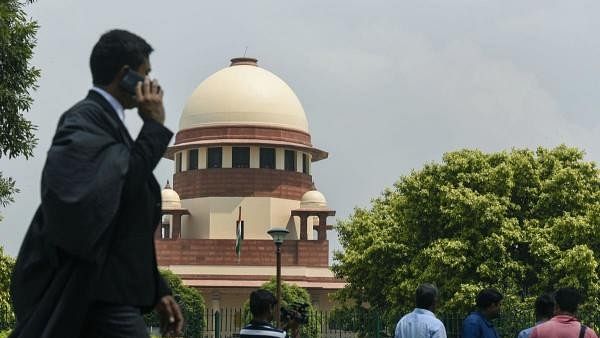
Supreme Court of India
Credit: PTI Photo
New Delhi: The Supreme Court on Friday said EVMs are simple, secure and user-friendly and voters, candidates and their representatives, and the officials of the Election Commission are aware of its nitty-gritty and they ensure righteousness and integrity of the poll process as it rejected a plea for 100 % verification of EVM counts with VVPAT or return of old ballot system.
A bench of Justices Sanjiv Khanna and Dipankar said this court acknowledged the right of voters to question the working of EVMs, which are but an electronic device that has a direct impact on election results. However, it is also necessary to exercise care and caution when we raise aspersions on the integrity of the electoral process, the bench said.
"Repeated and persistent doubts and despair, even without supporting evidence, can have the contrarian impact of creating distrust. This can reduce citizen participation and confidence in elections, essential for a healthy and robust democracy. Unfounded challenges may actually reveal perceptions and predispositions, whereas this court, as an arbiter and adjudicator of disputes and challenges, must render decisions on facts based on evidence and data," the bench said.
The court said it was not inclined to modify the directions on PIL filed by NGO Association for Democratic Reforms to increase the number of VVPAT undergoing slip count for several reasons from current system of verifying in five polling booths in one Assembly segment.
The court pointed out first, it will increase the time for counting and delay declaration of results. The manpower required would have to be doubled. Manual counting is prone to human errors and may lead to deliberate mischief. Manual intervention in counting can also create multiple charges of manipulation of results. Further, the data and the results do not indicate any need to increase the number of VVPAT units subjected to manual counting, it added.
"While we acknowledge the fundamental right of voters to ensure their vote is accurately recorded and counted, the same cannot be equated with the right to 100% counting of VVPAT slips, or a right to physical access to the VVPAT slips, which the voter should be permitted to put in the drop box," the bench said.
These are two separate aspects the former is the right itself and the latter is a plea to protect or how to secure the right. The voters’ right can be protected and safeguarded by adopting several measures, the court added.
The court also rejected as "foible and unsound" the submission to return to the ballot paper system.
"The weakness of the ballot paper system is well known and documented. In the Indian context, keeping in view the vast size of the Indian electorate of nearly 97 crore, the number of candidates who contest the elections, the number of polling booths where voting is held, and the problems faced with ballot papers, we would be undoing the electoral reforms by directing reintroduction of the ballot papers," the bench said.
The court also noted EVMs offer significant advantages as they have effectively eliminated booth capturing by restricting the rate of vote casting to 4 votes per minute, thereby prolonging the time needed and thus check insertion of bogus votes.
"EVMs have eliminated invalid votes, which were a major issue with paper ballots and had often sparked disputes during the counting process. Furthermore, EVMs reduce paper usage and alleviate logistical challenges. Finally, they provide administrative convenience by expediting the counting process and minimizing errors," the bench said.
The court also rejected a contention for giving physical access to VVPAT slips to voters as problematic and impractical.
"It will lead to misuse, malpractices and disputes. This is not a case where fundamental right to franchise exists only as a parchment, rather, the entire electoral process protocol, and the checks as well as empirical data, ensure its meaningful exercise," the court said.
The court noted during the hearing, it was suggested that instead of physically counting the VVPAT slips, they can be counted by a counting machine. This suggestion, including the one that barcoding of the symbols loaded in the VVPATs may be helpful in machine counting, may be examined by the EC.
These are technical aspects, which will require evaluation and study, it said.
The court also noted EVMs have been subjected to test by technical experts committee from time to time. These committees have approved and did not find any fault with the EVMs. The M3 EVMs currently in use are designed by engineers of BHEL and ECIL. These designs are vetted by the technical experts committee.
"To us, it is apparent that a number of safeguards and protocols with stringent checks have been put in place. Data and figures do not indicate artifice and deceit. Reprogramming by flashing, even if we assume is remotely possible, is inhibited by the strict control and checks put in place. Imagination and suppositions should not lead us to hypothesize a wrong doing without any basis or facts. The credibility of the ECI and integrity of the electoral process earned over years cannot be chaffed and over-ridden by baroque contemplations and speculations," the bench said.
